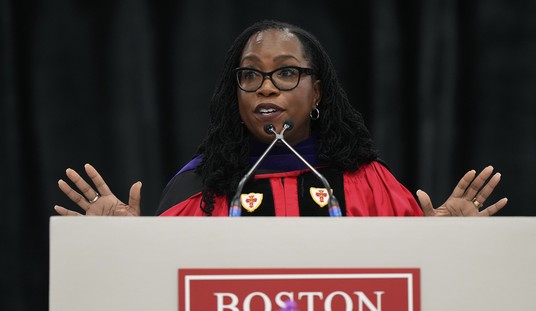Architecture has always fascinated me. I might have even become an architect if it didn’t require too much math.
The varied architectural styles that line the American landscape are a testament to the rich and vast character of this nation. Stately Georgian mansions, expansive National Park Service Rustic lodges (also called “Parkitecture”), quaint Craftsman homes, chic Southwestern bungalows, and even mind-bending Googie buildings reflect how incredibly creative Americans can be.
Architecture reflects the worldview of the architect as well as the client. The hideous Brutalist buildings that cropped up like weeds in cities throughout the 20th century took their inspiration from Communist worker housing, as well as from the left-wing urge to blow up everything conventional and start all over, as Tom Wolfe deftly noted in his masterpiece From Bauhaus to Our House.
“Parkitecture” sought to tie buildings into the natural surroundings, an aesthetic that Frank Lloyd Wright aimed for in his early designs. The architecture of America’s great lodges bowed to the majesty of God’s handiwork — shaping stone and timber to fit the land.
Likewise, the Neoclassical styles that characterize many of our historical buildings in Washington and state capitals reflect the ideal civilization that the Founding Fathers aspired to. Dr. Albert Mohler explained this on Wednesday on his podcast, The Briefing:
You have this brand new nation, and what kind of statement did it intend to make by the architecture of its national capital? It wanted to look like Rome. It wanted to look like echoes of Greece.
It wanted to look like classical architecture, which is also one of the reasons why you see some of the founders, and in particular George Washington, sometimes dressed in a toga, as if he were a Caesar or a senator of Ancient Rome. That wasn't an accident, and no, George Washington, so far as we know, never went around wearing a toga.
The fact is that that was an idealization of the American president and of especially America's first president. But here's the issue. That architecture was intended to say something. George Washington, in hiring Pierre L'Enfant to lay out the City of Washington, said it should be laid out on classical lines. And those classical lines were to make a very clear statement about the continuation of a democratic republican experiment. That means a democratic republic.
Two noteworthy building projects are demonstrating how architecture and worldview go hand in hand. First, there’s the White House Ballroom project that President Donald Trump is undertaking. We know that the president has a keen interest in federal buildings looking majestic and awe-inspiring.
Related: Trump Wants to Make American Buildings Beautiful Again
Most importantly, Trump wants the building to fit in with the rest of the White House complex. As much as the function of the ballroom drives it, Trump also wants it to be appropriate.
“The general design of the Trump ballroom — if you look at the actual sketches, not the social-media caricatures — is perfectly in keeping with the character of the White House complex, and if there’s any place where a cautious classicalism is appropriate, it’s at 1600 Pennsylvania Avenue,” writes Ross Douthat at the New York Times. “So in the end Trump’s architectural legacy will probably be a useful building, built expeditiously, that looks, if not dazzling, at least appropriate, pleasing, fine.”
That same reverence for enduring beauty guided the Founders — and, in its best moments, still echoes in projects today.
“I think George Washington and his colleagues in the Revolutionary and in the Founding era got it right. The United States only exists in continuity with the achievements of classical civilization,” Mohler said. “And what the American Founding Fathers wanted to say is that we are the result of the logic of that Western civilizational commitment.”
Yet the left is up in arms over razing the East Wing to build the ballroom. Instead, leftists should look at what Barack Obama and his team are building in Chicago. The forthcoming Obama Presidential Center rises on Chicago’s South Side like an architectural abomination — a sermon in concrete about man’s hubris.
Douthat likens the Obama Center to something out of Star Wars, while Mohler called it “something massively ugly and impermanent.” Yet it’s reflective of Obama the man. Like those Brutalists who wanted to scrap all convention and start again with a new architectural language, Obama wanted to “fundamentally transform” this nation (his words).
To put it bluntly, an ugly presidency begets an ugly presidential center.
It’s a battle of competing worldviews playing out in architectural styles: America first expressing itself in Classical architecture versus globalism expressing itself in something the 20th-century practitioners of the ugly International style would approve of. From the White House Ballroom to the Obama Presidential Center, America’s buildings reveal the clash between two worldviews — one that honors beauty and order, and another that preaches power and arrogance in concrete.
What we build reflects our values. That’s why so much American architecture is vibrant and memorable; it’s also why progressives think that unsightly buildings make a statement. In the end, our buildings will preach what we truly believe.










